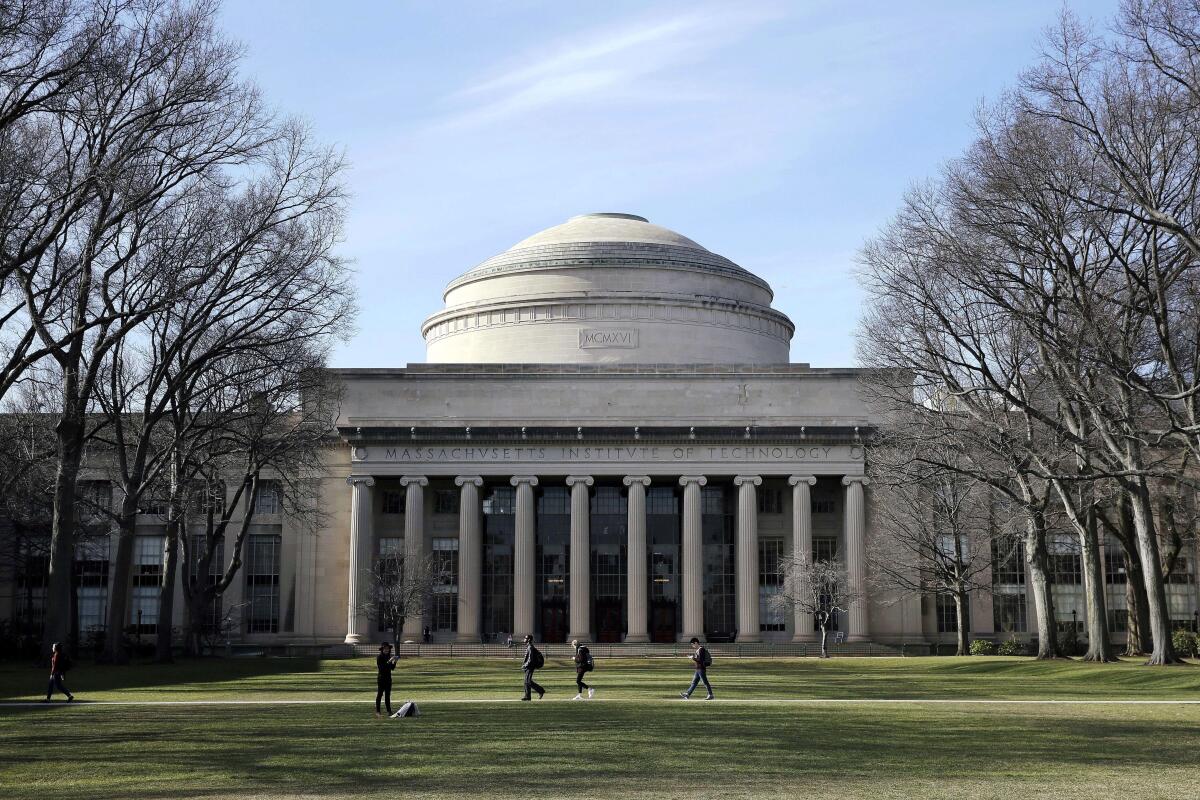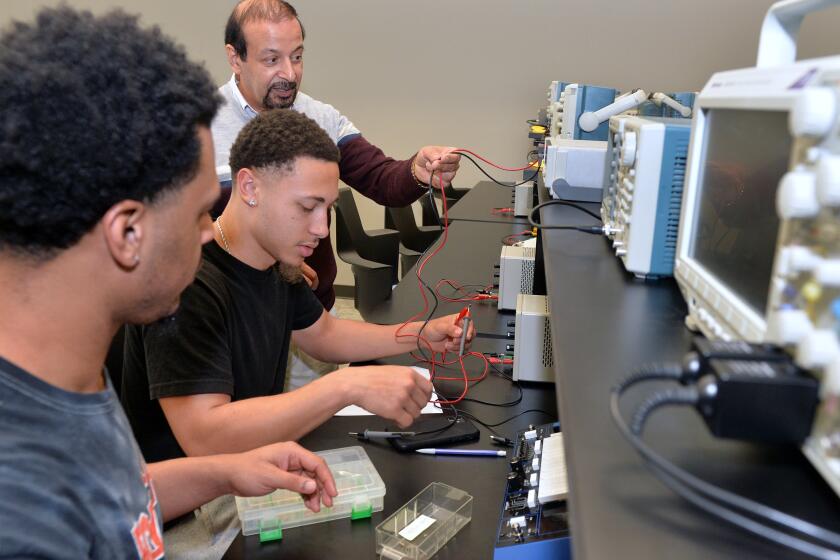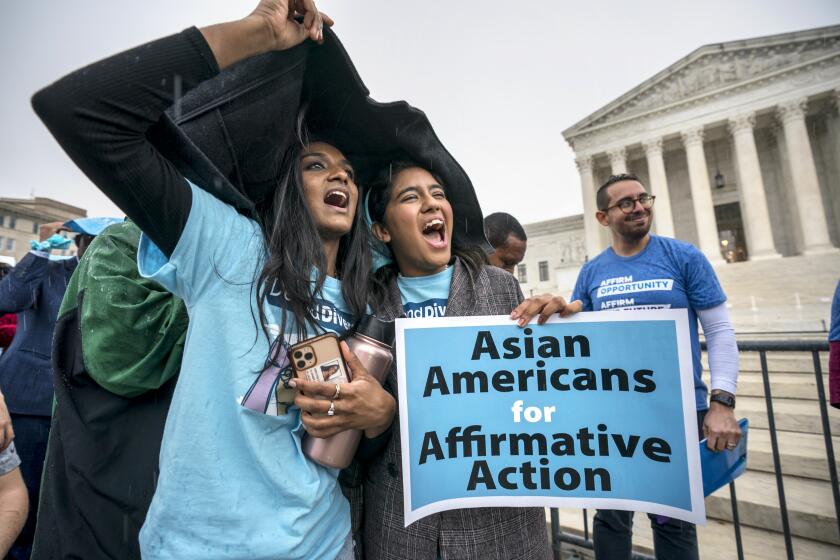How students can address their backgrounds on college applications, even without affirmative action

- Share via
MIT is the first college to release racial data on the class of 2028 since the Supreme Court ended affirmative action in admissions last year. To no one’s surprise, the school’s percentage of Black, Latino, Native American and Pacific Islander students dropped from 25% to 16% in just one year. MIT is not alone; it is just the first university to announce the inevitable. If a college formally used race in the admissions process, and most American colleges did until the court’s decision, its percentages will likely be down as well.
Without seeing racial checkboxes on applications, admissions committees are not able to know with certainty whether a student is coming from a background that’s underrepresented at their schools. But there are other ways to learn this, and a student’s race is not the only type of minority group that colleges are actively trying to recruit. While affirmative action is no longer used in its original form, a different type of action is being employed by colleges — one that is as nuanced as its predecessor.
The California Institute of Technology, long a bastion of male STEM students, enrolls an undergraduate class of majority women this fall, the first time in its 133-year history.
Certain genders, family compositions and geographic communities, as well as educational and socioeconomic backgrounds, make up a college’s definition of diversity. With race eliminated from admissions criteria, at least on the surface, these other categories are more strongly prioritized. In contrast, students coming from backgrounds that are common in an applicant pool may be held to a higher standard.
Everyone wants to know how to seem desirable on a college application. Simply put, schools want what they don’t have — or don’t have much of.
People of Black, Latino, Native American or Pacific Islander descent continue to be highly sought after by most colleges. Male-identifying students are very desirable too, especially for liberal arts schools and programs. With a few exceptions, such as MIT, males represent the minority at most colleges. Students coming from single-parent homes are rare in an applicant pool. Lower- and middle-income students, first-generation college students, and those coming from states including Montana, Wyoming, Idaho, North Dakota, South Dakota, Alaska, Mississippi and Alabama are seen as highly desirable by most colleges, as are students coming from rural communities within states that have many urban and suburban applicants.
Why do universities charge future teachers the same rate as future engineers?
In contrast, female-identifying students are admitted at lower rates than their male counterparts at most colleges. Students coming from a family where both parents received college degrees will be held to a higher standard than first-generation college students because the former group has traditionally had more resources to succeed. If parents have graduate or advanced degrees, the bar is higher, and it will be raised further if the parents seem to have high-paying jobs.
White, Asian, Jewish and wealthy students apply in large numbers to colleges, which can make admission more competitive for people in those groups. Some of these students try to hide their backgrounds. But admissions officers look for identifiers in the application. When I worked in admissions at an Ivy League university, among the things I paid attention to were students’ and parents’ names, home addresses, high school attendance, activities and awards, any of which could suggest or reveal things about the student’s background.
This is why I have always told students not to hide their histories. Admissions officers will almost always figure it out, with or without checkboxes. Students coming from underrepresented backgrounds need to write about this aspect of their identity somewhere in the application, whether it is the main essay or a supplemental essay on diversity. Overrepresented students worry about what to write for those diversity-focused essays. I push them to consider aspects of their life that they may overlook. These could include something that makes their family unconventional, such as having a grandparent who lives with them, a unique cadence to their speech or even something unusual about their neighborhood.
Editorial: Supreme Court’s affirmative action ban is a catastrophic blow to the American dream
If they truly want a diverse student body, colleges and universities must eliminate all other preferential admissions policies, especially for legacy applicants.
The coming admissions cycle is stressful for all applicants. Not all Black, Latino, Native American and Pacific Islander students know that writing about their race can give them a leg up. And overrepresented students may not know how to identify what makes them different from their peers.
Colleges claim racial discrimination doesn’t happen in the admissions process, at least not anymore. But forms of bigotry have plagued the industry for more than a century, always with a moving target. Some group is always “in” and others are always “out” — the public often just doesn’t know who it is until it’s too late.
This admissions cycle, students must do all they can to reveal how their backgrounds and experiences will enhance the mix of a student body. And schools have at least one clear target: Without explicit racial considerations, colleges seeking minorities must do even more work to diversify their campuses.
Sara Harberson is the author of “Soundbite: The Admissions Secret That Gets You Into College and Beyond” and the founder of Application Nation. She was the associate dean of admissions at the University of Pennsylvania and the dean of admissions at Franklin & Marshall College.
More to Read
A cure for the common opinion
Get thought-provoking perspectives with our weekly newsletter.
You may occasionally receive promotional content from the Los Angeles Times.












